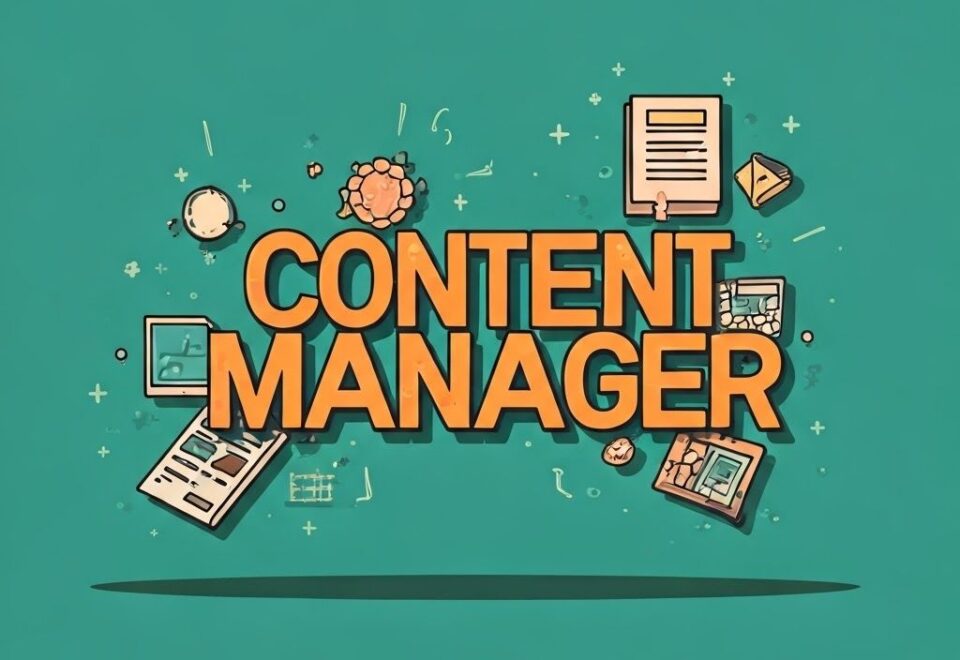With the right approach to sales enablement, you can transform your business prospects and arm your team with the knowledge and tools they need to thrive.
Getting it right is a must, so here’s a deep dive into all the things you need to know about sales enablement, from the tactics that work best to the metrics you need to track to measure your eventual success in this arena.
Understanding the Concept of Sales Enablement
Sales enablement is a strategic approach to improving your sales operations. It’s about providing your sales team with the resources, tools, and training they need to sell more effectively. The ultimate goal of sales enablement is to drive revenue growth by enabling every member of the sales team to perform at their absolute best. Here are some key components:
- It involves developing strong communication lines between various departments, particularly marketing and customer service.
- Training programs should be put in place, ensuring that all members know how the products solve specific customer problems.
- Resources such as case studies or tech stacks geared towards enhancing productivity can also contribute significantly.
By focusing on these aspects, you’ll build an empowered team capable of driving effective results. Every company might have its own unique ways of implementing it, but understanding its core philosophy remains vital for unlocking success in your sales efforts.
Sales Enablement Involves Anticipating the Customer’s Potential Problems
Understanding customer concerns and figuring out how your product can address them is a crucial part of sales enablement. Navigating the business landscape successfully requires having an in-depth knowledge of what troubles your customers might encounter, and knowing how to solve these problems before they arise.
You can improve sales performance with the help of a sales enablement consultant, but it’s also wise to consider these pointers if you want to implement your own changes:
- Conduct comprehensive research on your target market to unearth potential problem areas that can be addressed by your products or services.
- Develop tailored content (such as case studies or blogs) that communicate effectively how you resolve their challenges.
- Train your team on how best to deliver this message and create successful engaging interactions with clients.
A well-developed anticipation strategy not only increases satisfaction rates among existing clientele but also attracts new prospects. Hence, embracing this approach centralizes customer needs while boosting overall company growth.
How to Implement Effective Training Strategies for Sales Enablement
Effective training is foundational to the success of your sales enablement strategy. Providing your team with proper knowledge and practical insight equips them for better performance, whether during client engagement or internal communication contexts.
To develop a solid training strategy:
- Identify skill gaps among your salespeople: Understanding what areas they struggle in can help you cater specifically to their needs.
- Offer hands-on learning opportunities: Experiential activities such as role plays and real case analysis provide engaging ways to master necessary skills.
- Encourage ongoing professional development: Continuous education ensures they are abreast with industry trends, thus remaining productive.
Moreover, consider a blend of physical and digital platforms for offering these training experiences. While in-person sessions foster direct engagements, online platforms offer flexibility, which is an essential aspect nowadays due to increased remote working.
Also, remember that effective training strategies go beyond boosting product know-how. They create empowered individuals capable of thinking on their feet while delivering exemplary customer service.
Ready to elevate conversions and drive profits with sales enablement?
Contact Growth Hackers
The Crucial Role of Technological Tools in Sales Enablement
It should be no surprise that technology has ingrained itself into nearly every aspect of sales enablement. The right tools can greatly enhance the efficiency and effectiveness of your sales team.
Some specific aids worth considering are:
- Customer Relationship Management (CRM) systems: Platforms like Salesforce provide an organized way to track customer interactions and data yielding vital insights about client behavior, thus catalyzing conversions.
- Communication software: Tools such as Slack or Microsoft Teams help improve internal communication, enhancing collaboration among your teams.
- Training Platforms: eLearning programs like TalentSoft or Docebo facilitate streamlined delivery of training modules to your sales representatives.
These solutions not only simplify complex tasks but also save valuable time that can be dedicated elsewhere. They accomplish this through automation, analytics, and reporting features among others, all of which are aimed at ensuring maximum productivity within your team.
Therefore, adopting such tools becomes a key component in effectively implementing any successful sales enablement strategy today.
Building a Collaborative Environment: The Key to Successful Sales Enablement
Fostering a collaborative environment is one of the cornerstones of effective sales enablement. It’s not just about coordination within the sales team, but also robust interaction with other departments like marketing and customer service.
To create such an atmosphere:
- Encourage open communication: Regular meetings where members can share insights or address concerns enhance mutual understanding among teams.
- Leverage technology: Use collaboration tools such as Trello, Monday, Jira, Notion or Asana that make joint efforts manageable and efficient.
- Advocate for joint objectives: Aligning goals across different functions is one of the top growth hacks as it helps unite separate departments into a singular cohesive force focused on shared successes.
Basically, building a culture of collaboration lets you harness collective strength and in turn bolster individual capabilities. This results in informed decision-making benefiting from varied perspectives ensuring your strategies resonate with wider internal and external contexts.
Ultimately, it’s an example of how fostering teamwork isn’t just about harmony in the office, but it’s also a smart business strategy that brings you closer to hitting targets together.
Creating Winning Content: Harnessing its Power in Sales Enablement
Sales enablement thrives on good content. It provides vital information, addresses concerns, and captures the interest of potential buyers. Therefore, creating high-quality content tailored explicitly to your audience should be a core element in your strategy.
Here’s how you can leverage content:
- Understand Your Customer: To make engaging content, understand their needs, and tailor materials that directly address those requirements.
- Use Varied Formats: Implement diversity in types such as blog posts, videos, or infographics each appealing to different customer preferences.
- Incorporate Testimonials and Case Studies: Whether this is by email or during a closing call, sharing successful experiences builds trust among prospective clients instilling confidence about your offerings.
Of course, winning content isn’t limited to just attracting attention. It also involves nurturing relationships with customers, leading them through the buying journey all the way towards post-sales cycles of support and engagement.
Data Analysis and Reporting in Maximizing Your Sales Efforts
Measuring performance forms the backbone of successful sales enablement. The use of data analysis gathers insights that can inform strategy, help improve results, and increase profitability.
Consider utilizing:
- Sales Analytics Tools: Platforms like Tableau or Domo are useful for tracking key sales efficiency metrics such as deal sizes or conversion rates. They provide clear visual representations that simplify complex data into actionable information.
- CRM Systems: Once again, a good CRM is worth its weight in gold, as it captures customer interactions over time. This allows you to understand not just what’s working, but why it is effective.
- Social Media Insight Tools: Apps like Hootsuite evaluate engagement levels on various platforms offering clues about how well your strategies resonate with online target groups.
From identifying patterns that influence buying decisions to uncovering areas needing improved focus, marketing information management (MIM) unlocks valuable intelligence that you can turn into data-backed decisions.
Get ready to empower your team with sales enablement today!
Measuring Success: Effective Metrics for Recognizing Progress
We’ve just discussed the benefits of digging into the figures to find the path forward in a sales enablement scenario. You also need to be able to measure success, which means knowing what metrics are worthy of your attention. Doing this right can highlight areas of achievement and also pinpoint potential drawbacks in existing strategies.
Consider these metrics:
- Sales Cycle Length: A shorter cycle could suggest that your team is efficiently closing deals, saving time and resources.
- Conversion Rate: If you’re converting leads into customers at a high rate, then your strategies are likely working well.
- Engagement Indicators: Track interactions with pieces of content like blog posts or case studies in order to gauge how willing prospects are to engage with marketing initiatives you’re operating.
Of course, you need to be considerate of the fact that it’s not always useful to get too bogged down in short-term analysis. You’re better off having one eye on long-term trends in your sales as well, as this holistic approach is the only one that will give you a true sense of how your sales enablement initiatives are performing.
Future Trends That Could Impact Your Strategy for Enabling Efficient Selling
It’s vital to keep an eye on future trends that might shape the sales enablement landscape. Being at the forefront of these impending shifts maintains your status as an innovator, guaranteeing growth.
Here are three trend predictions:
- Guided selling will become more prominent: Using AI to deliver personalized customer experiences is already a possibility, so grabbing hold of it sooner rather than later makes sense.
- Omnichannel engagement: Seamless integration across various platforms ensures all-encompassing client reach. With customers having their attention diverted all the time, this will continue to rise to prominence as a point to factor into sales enablement.
- Video marketing: video is becoming the favored medium of content consumption online so you should leverage it by posting video content on YouTube, TikTok, Instagram, LinkedIn and other platforms. From animated explainer videos to testimonials, UGC content and more, you have the choice.
Any organization that’s quick to adapt to evolving dynamics will continue being relevant by satisfying both contemporary demands while preparing for the unknown market scenarios of the future.
Wrapping up Sales Enablement’s Success Journey
Now that you’ve taken this journey through sales enablement with us, the time to harness these insights and practices has arrived. In doing so, you’ll be better equipped to energize your team and drive business growth.
Lastly, don’t forget that successful sales enablement doesn’t happen overnight. Instead, it’s a continuous process of learning, iterating, and improving. Good luck!
Growth Hackers is an experienced customer acquisition agency helping businesses from all over the world grow. There is no fluff with Growth Hackers. We help entrepreneurs and business owners drive growth with sales enablement, increase their productivity, generate qualified leads, optimize their conversion rate, gather and analyze data analytics, acquire and retain users and increase sales. We go further than brand awareness and exposure. We make sure that the strategies we implement move the needle so your business grow, strive and succeed. If you too want your business to reach new heights, contact Growth Hackers today so we can discuss about your brand and create a custom growth plan for you. You’re just one click away to skyrocket your business.








